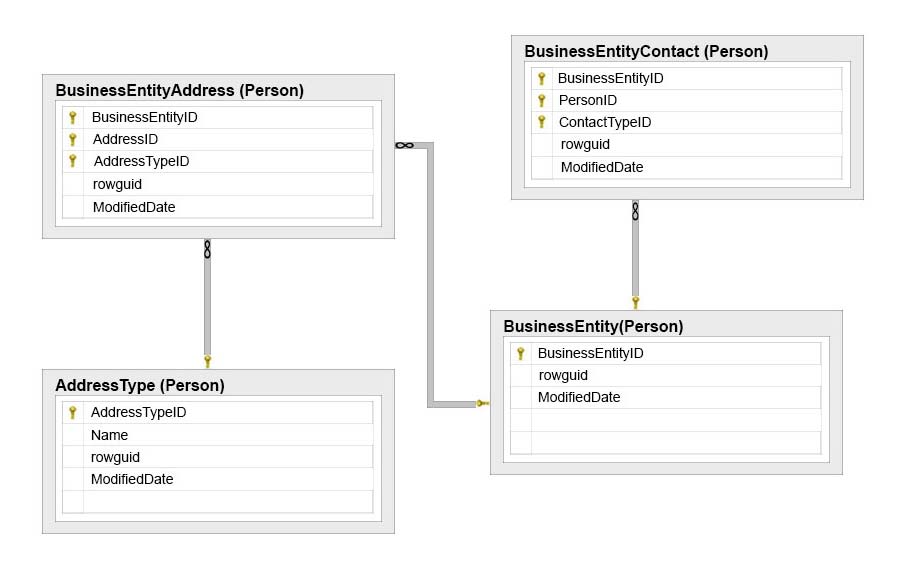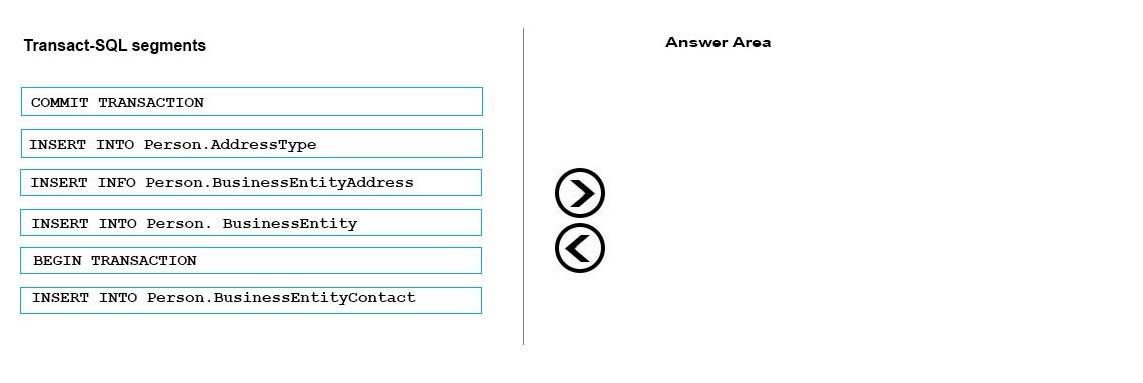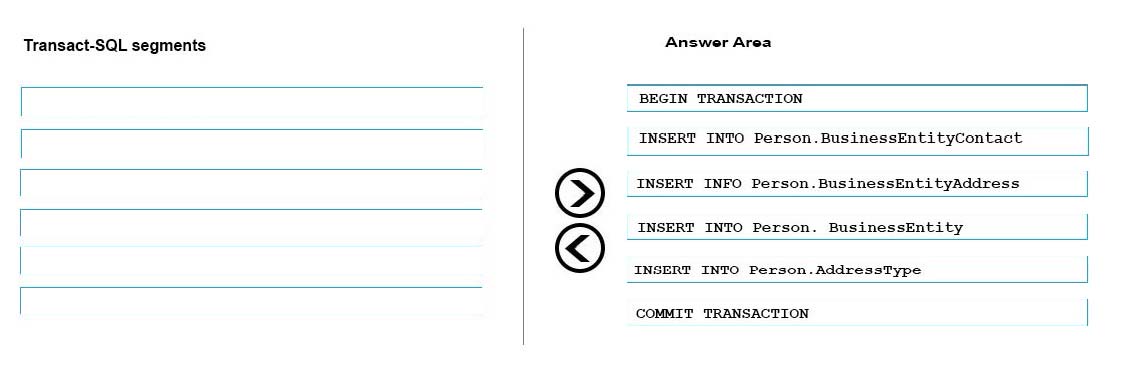

DRAG DROP -
You are creating a stored procedure which will insert data into the table shown in the Database schema exhibit. (Click the exhibit button.)
You need to insert a new customer record into the tables as a single unit of work.
Which five Transact-SQL segments should you use to develop the solution? To answer, move the appropriate Transact-SQL segments to the answer area and arrange the, in the correct order.
NOTE: More than one order of answer choices is correct. You will receive credit for any of the correct orders you select.
Select and Place:

Bartek
Highly Voted 5 years, 4 months agoNickMane
5 years, 3 months agoSzalonyZielonyRobak
Highly Voted 5 years, 3 months agoAJ_96
5 years, 3 months agoAndy7622
4 years, 8 months agokiri2020
4 years, 5 months agosmartrammy
Most Recent 4 years, 9 months agostm22
4 years, 11 months agoeggzamtaker
4 years, 5 months agoAnette
5 years agoAnette
4 years, 11 months agobinbashir22
4 years, 5 months agoGocsan
5 years, 5 months agodatabasejamdown
4 years, 8 months agoJiacheng
5 years, 3 months agoCageman
5 years, 5 months agoRavenVStar
5 years, 6 months ago